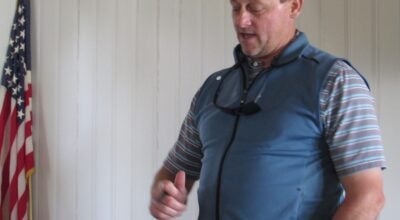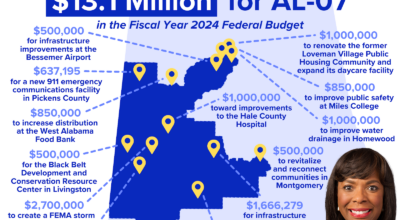Water board retests, finds no bacteria
Published 2:10 pm Sunday, June 24, 2012
Demopolis Water and Sewer Board customers got a scare this week when they received a letter from the entity addressing two positive test for coliform bacteria.
“Some genera of the coliform group of bacteria found in water and soil are not of fecal origin but grow and reproduce on organic matter outside the intestines of humans and animals. These coliforms indicate either fecal contamination or the possible presence of pathogens,” Demopolis Water and Sewer Board General Manager Brooks McCants said, citing the textbook definition of coliform bacteria and what the department tests for it.
The positive tests occurred May 24, prompting the board to follow Alabama Department of Environmental Management protocol in both following up on and reporting the incident.
“When you go out to do these samples, you’re doing a bacteriological sample. ADEM requires you to have a free chlorine level of between 0.2 to 4.0 milligrams (ppm) per liter,” McCants said. “When you run these tests, you’re looking for coliform absence and coliform presence and then ecoli absence and ecoli presence. These two samples indicated coliform present but ecoli absent.”
The follow-up tests indicated far different levels than the original procedures showed, underscoring the fact that the May 24 examinations were flawed.
“Of the two sample locations, one of them tested at 1.3 ppm the other was 0.6 ppm,” McCants said.
After the laboratory utilized by the board indicated positive coliform samples had been taking, the department followed ADEM policy in placing announcements in the local newspaper and sending letters out to each meter-holder in its constituency.
The board took repeat samples May 30, learning soon thereafter that Demopolis water actually had no coliform or ecoli presence.
“We’re required to collect three repeat samples per positive test. So we had to collect six. Of those three repeat samples per location, one has to be the exact location, one has to be within five service connections upstream, one has to be within five service connections downstream of the positive,” McCants explained. “All of these samples came back negative.”
The letter sent out to customers indicated that the tests which produced a false positive were likely mishandled by either the test administrator or by the lab itself.
“After detailed review of the incident, we believe that the root cause of this issue is improper sampling technique and/or improper laboratory technique,” McCants said. “We have five wells in town. Out of the five wells, only one of them showed one total coliform colony per 100 mils at the time of this positive test. But that’s raw water, and that is expected to be raw water. It is not treated yet. That is sampling prior to chlorine.”





